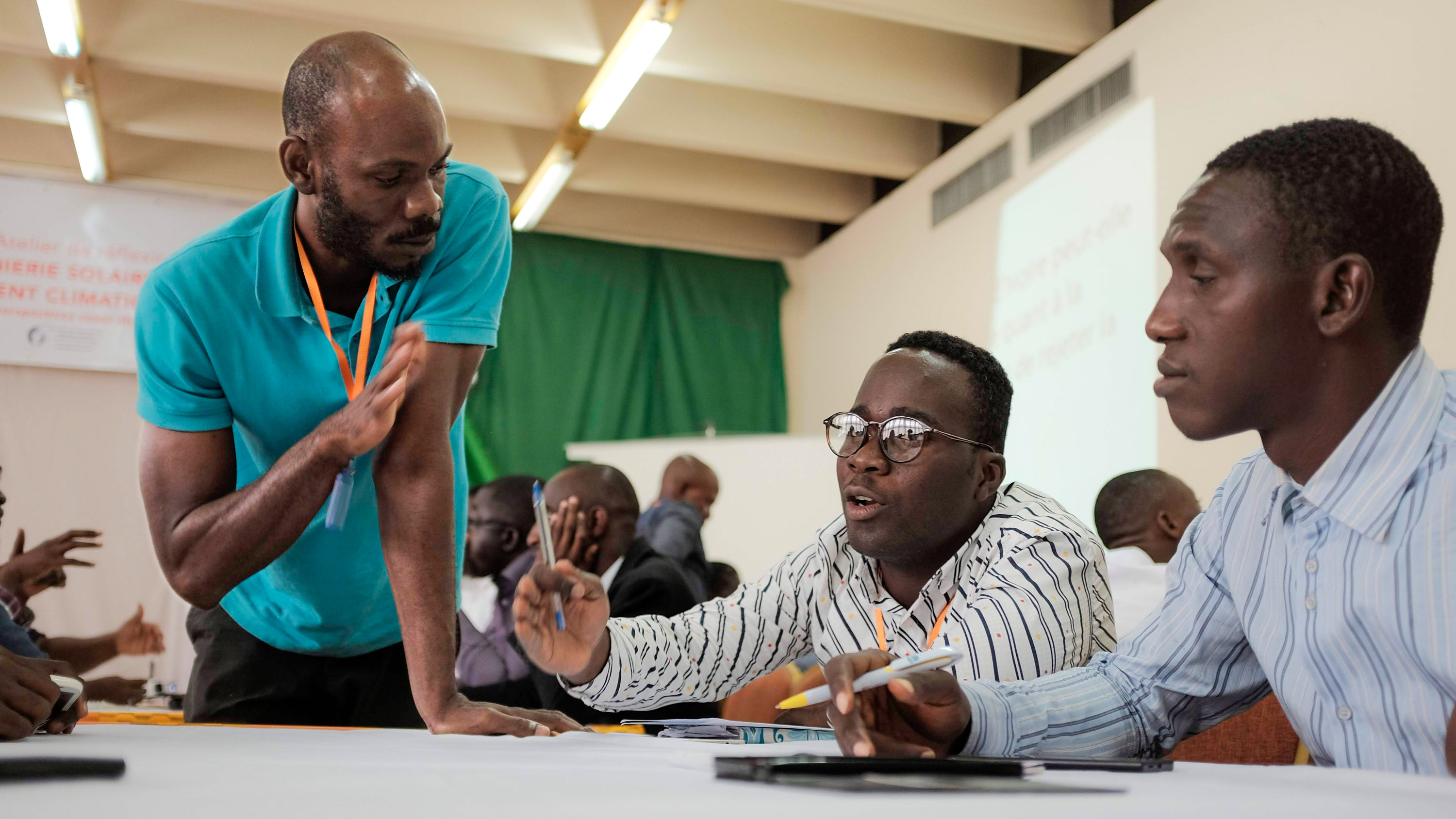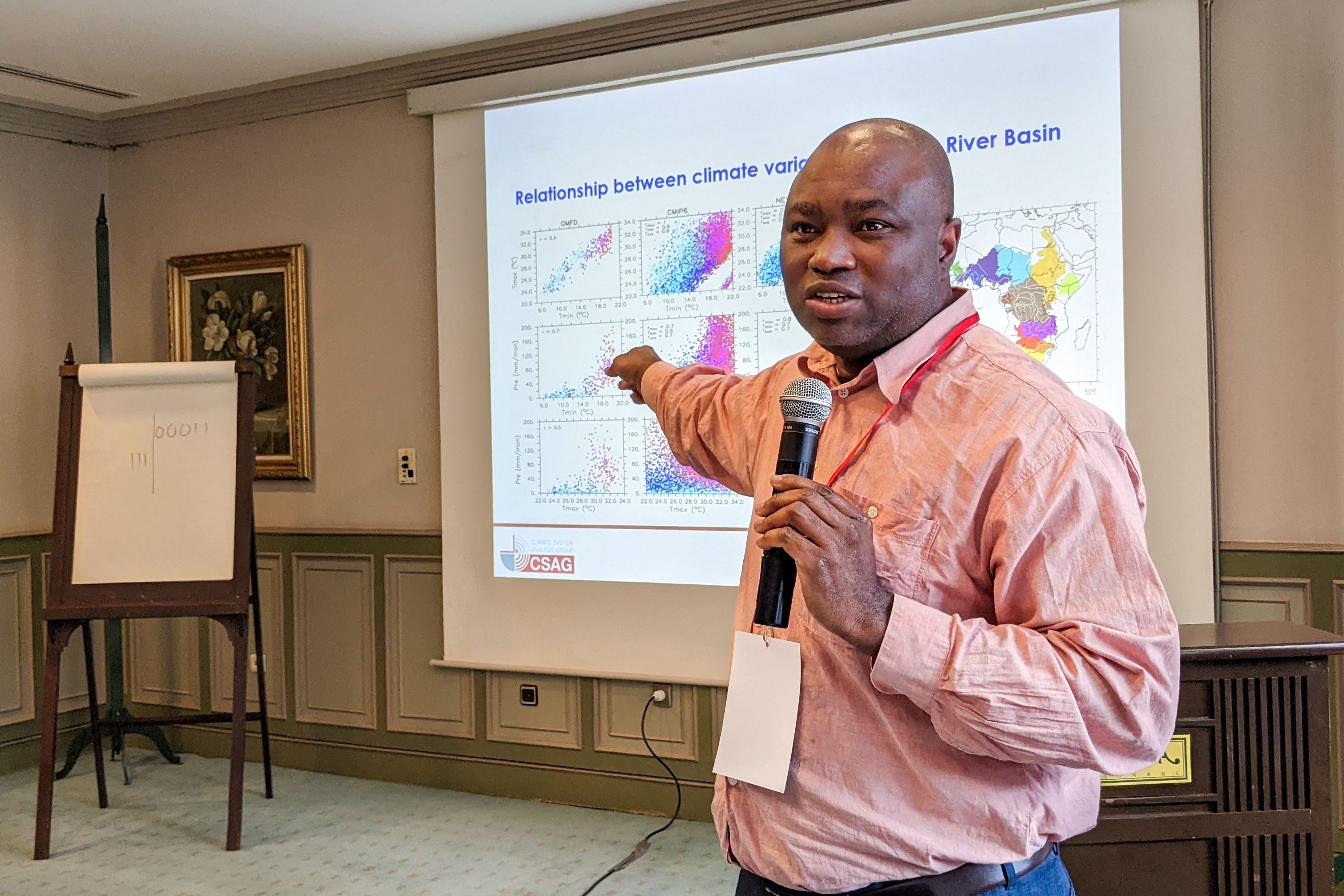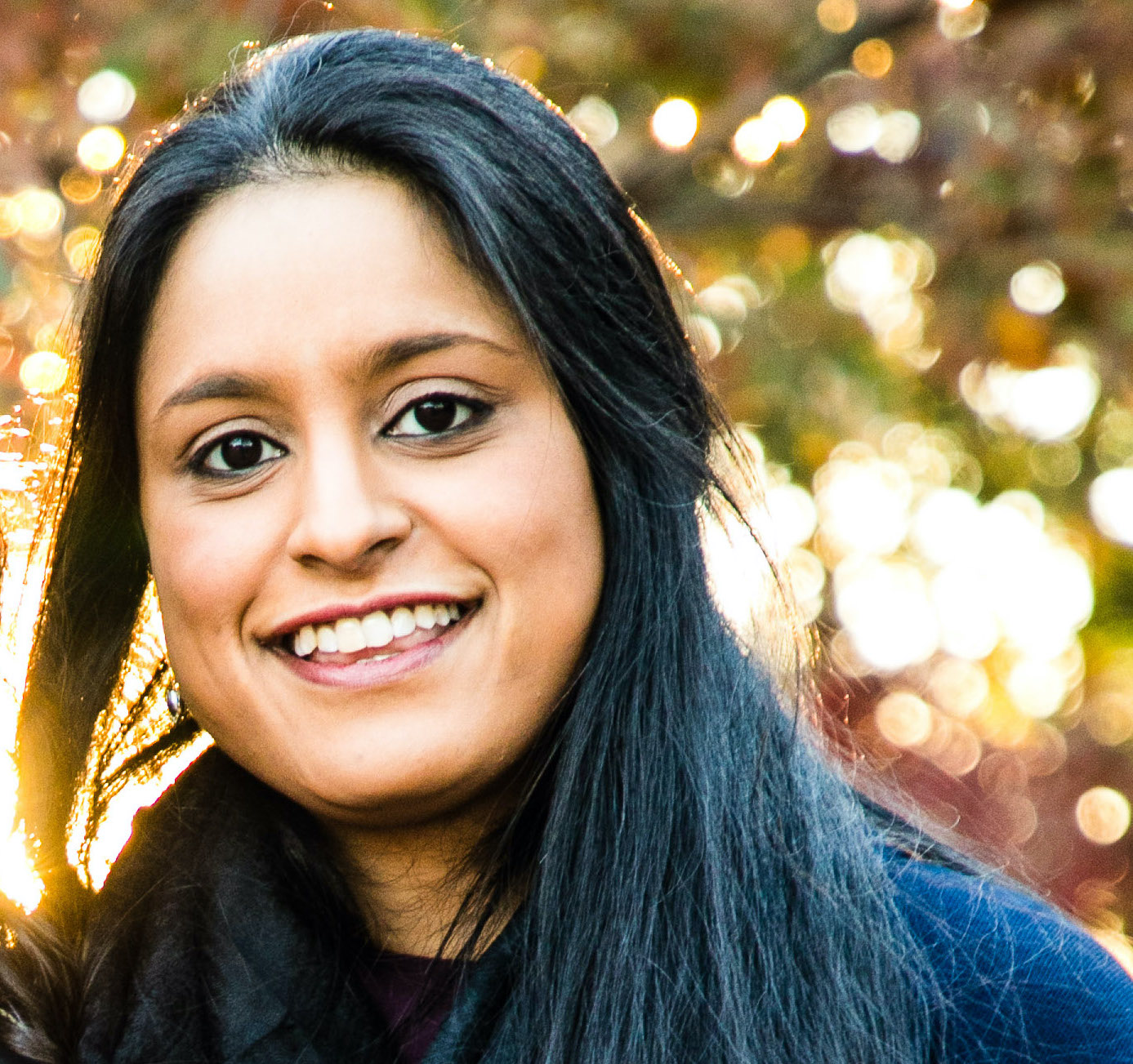This technology could alter the entire planet. These groups want every nation to have a say.
Nonprofits and academic groups are working to help climate-vulnerable regions take part in the high-stakes global debate over solar geoengineering.

Picture two theoretical futures: one in which nations counteract climate change by spraying reflective particles into the stratosphere, and another where the world continues heating up. There are big differences between the two, but a lot of smaller, more subtle changes too.
Take malaria, for example—the sixth-largest killer in low-income countries.
By 2070, the overall risk of malaria transmission ends up roughly the same in the two worlds. But in the hypothetical geoengineered version of Earth, the threat of the disease has moved on the map. In that scenario, millions fewer people in East Africa live in danger of a potentially deadly mosquito bite. But across West Africa, 100 million more do.
Those findings, published in Nature last year, underscored the complex trade-offs that could accompany any decisions about solar geoengineering, the highly controversial notion that we could curb global warming by reflecting more sunlight back into space. And they raise incredibly difficult questions about who should get to determine how or whether the world ever uses tools that alter the entire climate system, in ways that may benefit many but also create new dangers for some.
“It’s not really eradicating the risk—it’s redistributing the risk from one place to another,” says Mohammed Mofizur Rahman, a scientist focused on climate change and health at the Potsdam Institute for Climate Impact Research, who was part of an international team of researchers that used computer models to explore these future worlds. (The scenarios detailed above compare moderate emissions and moderate amounts of geoengineering, but other possible futures were and still could be explored.)
The research project was based at Bangladesh’s International Centre for Diarrhoeal Disease Research. It was funded by the Degrees Initiative, a UK-based nonprofit whose mission is to help people in the poorer, hotter countries that face the highest climate risks participate directly in the global discussion over solar geoengineering and study the effects it could have on their regions.
“If it works well to reduce risks, then they have got the most to gain,” says Andy Parker, chief executive officer of the Degrees Initiative. “If it goes wrong or is rejected prematurely, they’ve got the most to lose.”
“But historically, they haven’t been well represented,” he adds. “Most research has taken place in the world’s largest economies.”
The 13-year-old Degrees Initiative, which announced in February that it would fund 15 more research projects, is the most high-profile part of a growing effort to ensure that people in low-income nations have more of a voice in the dialogue over solar geoengineering.
Shuchi Talati, a former Biden administration official, is launching a nonprofit today that will strive to help nongovernmental organizations in climate-vulnerable regions participate in efforts to set up rules or organizations to guide any research into or use of such technologies. Other groups are polling citizens and experts in these nations to better understand how the technologies are perceived.
But critics of geoengineering research argue that whatever the stated goals, such efforts legitimize the development and eventual use of a climate intervention that they insist is too risky to even consider. Among other concerns, it can never be governed in a fair and equitable way given global power imbalances, says Jennie Stephens, a professor of sustainability science and policy at Northeastern University.
There’s been a “very strategic effort to get this mainstreamed, and it’s effective,” she says. “It’s become more and more legitimized as a potential option in the future, and building knowledge networks around this topic is expanding that lobbying effort as far as I can tell.”
A moral obligation
Climate change will exact the steepest toll on the hottest and poorest parts of the world, because higher temperatures in those areas threaten to push conditions beyond what’s sustainable for crops or safe for humans and animals. These regions also often lack the resources to counteract the dangers of extreme heat waves, rising ocean levels, droughts, flooding, and more through climate adaptation measures like desalination plants, seawalls, or even air conditioners.
For some proponents of geoengineering research, the fact that climate dangers driven predominantly by emissions in rich nations fall overwhelmingly on poor ones creates a “moral obligation” to at least explore the possibility.
Opponents, however, argue that studying such technologies eases pressure to address the biggest factor in climate change: extracting and burning fossil fuels. That, in turn, threatens to further concentrate global economic power and perpetuate inequalities, injustices, and exploitation between poor and rich nations, argued Stephens and Kevin Surprise, a lecturer at Mount Holyoke College, in a 2020 paper.
But either way, academics, activists, and environmentalists in the Global North are too often simply making pronouncements about the interests of huge, heterogeneous parts of the world and not meaningfully engaging with researchers, nonprofits, and citizens in those nations, says Sikina Jinnah, a professor of environmental studies at the University of California, Santa Cruz.
“This is really the Global North speaking on behalf of the Global South,” she says. That’s yet another environmental justice violation, one “embedded in the discourse itself.”
Numerous modeling studies suggest that spraying particles into the stratosphere, brightening coastal clouds, or similar geoengineering techniques could reduce global temperatures.
But planetary averages say little about the complex, contradictory, overlapping, and sometimes unpredictable ways in which regional climate conditions interact with ecosystems, economies, infrastructure, emergency response systems, and more. Some studies have highlighted the potential for negative side effects, including sharp decreases in monsoon rainfall in certain areas, which could have life-and-death implications for food production.
These tensions immediately raise a host of thorny questions: What’s the right average global temperature? Is solar geoengineering okay to use if it helps most countries, but has calamitous effects in some? What body gets to say whether it’s okay to pull the trigger on a technology that could alter the entire climate? What constitutes an acceptable global consensus on a question of such profound weight?
What is clear is that, to date, this conversation and the research that informs it have been dominated by voices and scientists in well-to-do nations.
That isn’t to say that emerging economies have been passive actors, waiting around for workshop invitations or funding from nonprofits based in the Western world. Researchers in China have been the fourth most prolific producers of papers on solar geoengineering since 2009, and scientists in India have generated dozens as well, according to an analysis by Jinnah.
But about 80% of the research over that time has been done by scientists in high-income nations, primarily in the US and Europe. That concentration creates real concerns over whether the field is probing the most relevant and pressing questions for the regions with the most at stake, and whether the collective findings will be perceived as representative and legitimate.
Degrees
The organization that would become the Degrees Initiative was founded in 2010 as a partnership between the Environmental Defense Fund, the Royal Society, and the World Academy of Sciences. It was originally conceived as a one-year project to draft a report on how solar geoengineering research should be governed. But the ultimate conclusion was that far more work needed to be done before specific recommendations could be made.
The mission then evolved into helping bring climate-vulnerable nations into that conversation. Degrees began partnering with local organizations to host workshops in countries including India, China, Pakistan, and Ethiopia in the hope of sharing knowledge and establishing relationships.

In 2018, the group launched the Degrees Modeling Fund (originally the Decimals Fund) to help support research by scientists in these vulnerable nations.
“Workshops were a good first step, but it became clear that you don’t build expertise by running events or writing reports,” Parker said in an email.
The Degrees Modeling Fund has now awarded nearly $2 million in grants to researchers in 21 developing nations who are exploring these sorts of issues. Among other projects, researchers are studying the potential impact of solar geoengineering on drought conditions in South Africa, Andean glaciers in Chile, and summer monsoon rainfall in India.
The organization, which has a staff of eight, provides grants of up to $75,000, and teams up researchers in low-income nations with established experts in these topics. All the projects rely on data from existing climate and geoengineering models to explore questions of regional interest. The organization does not fund outdoor solar geoengineering experiments.
Rahman of the Potsdam Institute isn’t in favor of using solar geoengineering. But he says it’s crucial for researchers in developing countries to study the issue themselves and explore questions that could have huge local implications but might not occur to scientists in the US or EU.
That ensures their work can inform the global negotiations over appropriate responses to climate change, through the UN or otherwise. He notes that the malaria study, which involved researchers from Georgetown, Rutgers, the University of Cape Town, and other institutions, underscored the point that the developing world can’t be easily lumped together as a prospective winner or loser from solar geoengineering.
“There are trade-offs,” Rahman says, and countries need to know what they are and “who will sacrifice.”
Just Deliberation
One concern, however, is that science alone can’t begin to address all the difficult ethical, political, and sociological questions posed by solar geoengineering. Some argue that such efforts shouldn’t proceed in the absence of broader public engagement and social science research.
Talati, the former chief of staff of the US Department of Energy’s Office of Fossil Energy and Carbon Management, says she hopes the nonprofit she is launching today, the Alliance for Just Deliberation on Solar Geoengineering (DSG), can help fill some of these gaps.
The group, based in Washington, DC, will work with local experts and civil society groups to convene meetings and workshops, develop exercises that help build understanding and increase engagement, and identify relevant research questions to explore in the social and physical sciences. It will also provide accessible resources to staff and faculty of nonprofits and universities in vulnerable regions. The driving goal is to help them participate in the national and international debates over how, or whether, solar geoengineering is researched, developed, regulated, and used.
DSG won’t advocate for researching or using geoengineering, or push for public acceptance or rejection of the idea, Talati says. Rather, the goal is to ensure that decision-making processes are inclusive and just.
“If we want this field to grow in a way that has legitimacy and in a way that we can actually build more informed discussions, we have to build pathways to civil society and climate-vulnerable people,” says Talati, who was previously a scholar in residence at American University’s Forum for Climate Engineering Assessment. She also serves as cochair of the advisory board for a solar geoengineering research project at Harvard.

Talati is addressing something that’s been missing from previous efforts to explore these concepts, says Jane Long, a former associate director at Lawrence Livermore National Laboratory.
“She is really trying to get people [in the Global South] to understand what geoengineering is and what kinds of concerns and interests they might have,” she says. “Not just for the sake of knowing what they are, but to ensure they’re communicated in the research community, which is largely in the Global North.”
The Degrees Initiative also plans to launch a fund to support social sciences research later this year.
Direct experience with disaster
In a separate effort, UC Santa Cruz’s Jinnah is leading and raising funds for a large, multi-year polling effort designed to study how people in climate-vulnerable areas perceive solar geoengineering as a possible response to global warming.
Talati and Alice Siu, associate director of Stanford’s Deliberative Democracy Lab, are the co-principal investigators on that project.
Jinnah says they’re taking a “deliberative polling” approach that goes well beyond standard polls or surveys. The team will host meetings that feature moderated discussions and question-and-answer periods with experts. They will also develop and present neutrally written informational materials in local languages, produced with the assistance of the UC Santa Cruz science communications program.
The goal is to spend considerable time helping people understand the basic issues before asking their opinion on a topic that many may not have been familiar with.
Jinnah says the main thing they hope to learn is whether, after these efforts, the people who’ve participated think solar geoengineering should be considered as part of a global portfolio of climate responses—and if so, under what conditions.
The researchers hope to eventually conduct these conversations in 35 countries.
We already have some indications of what those attitudes might be in climate-vulnerable areas, at least among local experts. In interviews across some 30 nations, respondents in the Global South were generally more supportive of solar geoengineering research, and perceived fewer risks, than their peers in the Global North, according to preliminary results from researchers involved with the European Union–funded GENIE Project.
Early findings also indicate that experts in regions that face particularly high risks from climate change, like sea-level rise, coral-reef bleaching, and extreme heat waves, generally have more favorable views about both geoengineering and greenhouse-gas removal, says Benjamin Sovacool, a professor of energy policy at the University of Sussex and principal investigator on the project.
“Direct experience with climate disasters seemed to be better predictors than if you were in the Global North or Global South,” he says.
Understanding benefits and risks
Rahman says funding and other support from Degrees helps researchers develop the expertise to conduct more studies and explore more questions on their own. He adds that the program has begun to spark more conversations and collaborations between researchers in various parts of the developing world.
Inés Camilloni, a professor in the University of Buenos Aires’s department of atmospheric and oceanic sciences and contributing author to several UN climate panel reports, also says that Degrees has helped to get solar geoengineering research underway in climate vulnerable regions.
She and her colleagues used a Degrees grant to explore how solar geoengineering could affect the flow of water through the La Plata basin, a vast network of rivers that stretches across five countries in southeastern South America. The study, published last year, found that it could reduce the risks of low-water conditions and extreme temperatures relative to a world warmed by high levels of emissions. But it may increase flooding dangers.
She notes that Degrees also funded studies in Chile and Brazil, adding that little work had been done on the subject in South America previously.
But Camilloni says much more research is needed, using more models to explore more scenarios and more questions. “We need to better understand the benefits and the risks at this scale,” she says.
Northeastern’s Stephens, however, argues that organizations shouldn’t support or fund research at all. She believes such efforts are inherently pro-geoengineering and create a slippery slope.
“This is a really dangerous technology that I don’t think we should be perpetuating and expanding funding and research in,” she says. “The more you fund something and do research on it, the more likely it is that it will be used.”
Stephens is among a group of more than 400 academics who signed a letter early last year advocating for an International Non-Use Agreement on Solar Geoengineering. It called on countries to commit to not deploying such technologies, preventing national funding agencies from supporting their development, and banning outdoor experiments.
“Given the anticipated low monetary costs of some of these technologies, there is a risk that a few powerful countries would engage in solar geoengineering unilaterally or in small coalitions even when a majority of countries oppose such deployment,” the letter stated. “In short, solar geoengineering deployment cannot be governed globally in a fair, inclusive, and effective manner.”
Parker strongly disagreed with what he calls the “daft, spurious idea” that supporting research will inevitably lead to using solar geoengineering. He notes that a variety of studies on other proposals to counteract climate change have had the opposite effect: interest in ideas like fertilizing carbon-sucking phytoplankton and making deserts or other surfaces more reflective waned after research showed they could be less effective or more dangerous than hoped.
“If climate scientists in West Africa want to understand what this might mean for their region, then facilitating them is a good thing,” he says. “I don’t think it will lead to nations in West Africa wanting to do solar geoengineering; I think it will allow them to understand and argue for their interests when it comes to questions of whether we want to use it or not.”
Meanwhile, Talati acknowledges that the world is not going to develop a perfectly just, equitable way of governing research on solar geoengineering, or the possible use of it one day.
“But we have to try to build something that makes this at least as just as possible,” she says. “Ignoring it or not researching it won’t make it not happen either. We have to function within the reality we’re in—and try to make it better.”
Deep Dive
Climate change and energy
The problem with plug-in hybrids? Their drivers.
Plug-in hybrids are often sold as a transition to EVs, but new data from Europe shows we’re still underestimating the emissions they produce.
Harvard has halted its long-planned atmospheric geoengineering experiment
The decision follows years of controversy and the departure of one of the program’s key researchers.
Why hydrogen is losing the race to power cleaner cars
Batteries are dominating zero-emissions vehicles, and the fuel has better uses elsewhere.
Decarbonizing production of energy is a quick win
Clean technologies, including carbon management platforms, enable the global energy industry to play a crucial role in the transition to net zero.
Stay connected
Get the latest updates from
MIT Technology Review
Discover special offers, top stories, upcoming events, and more.